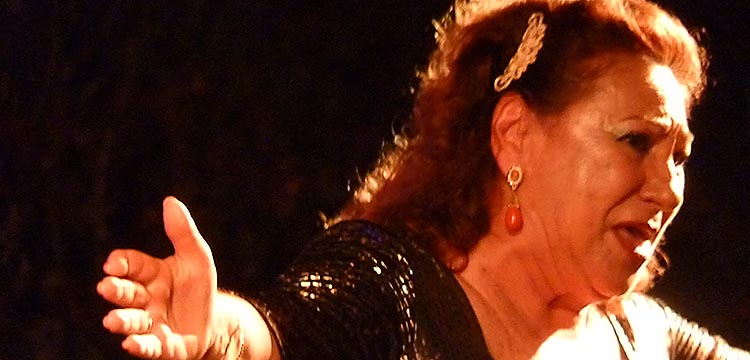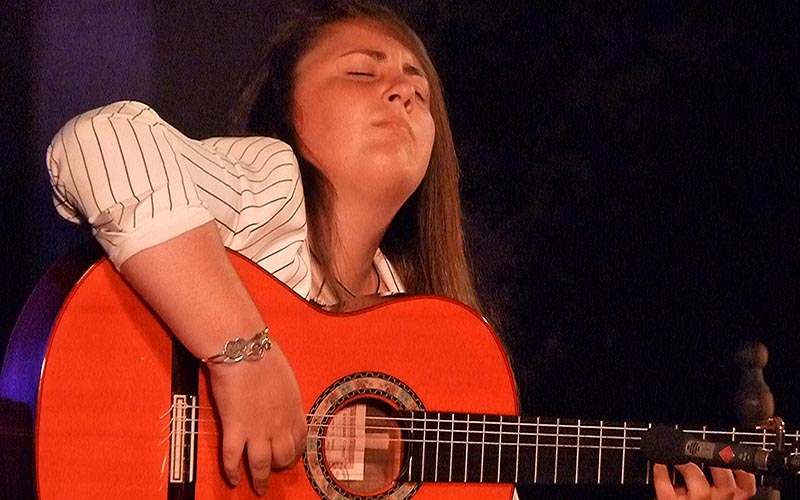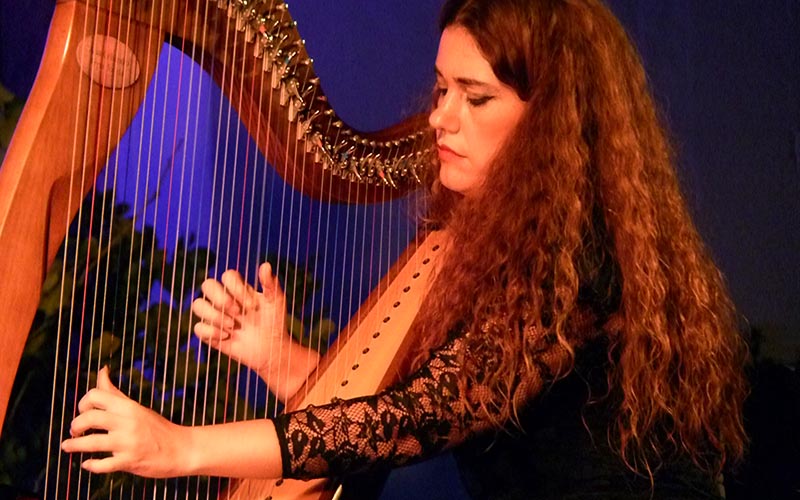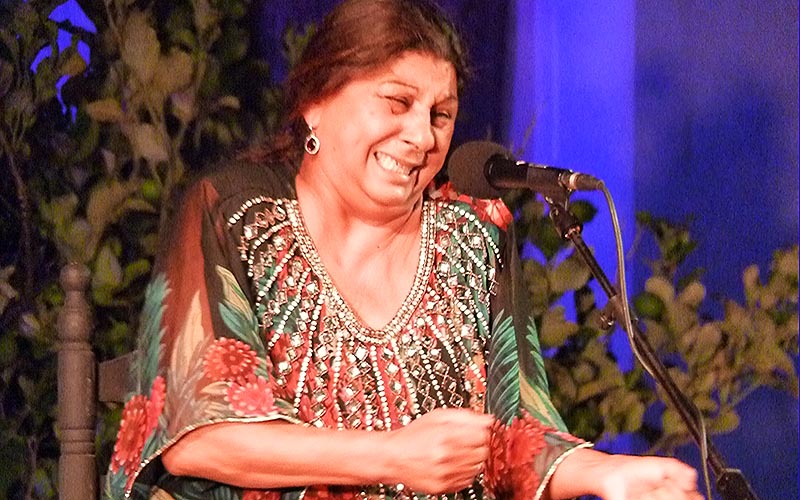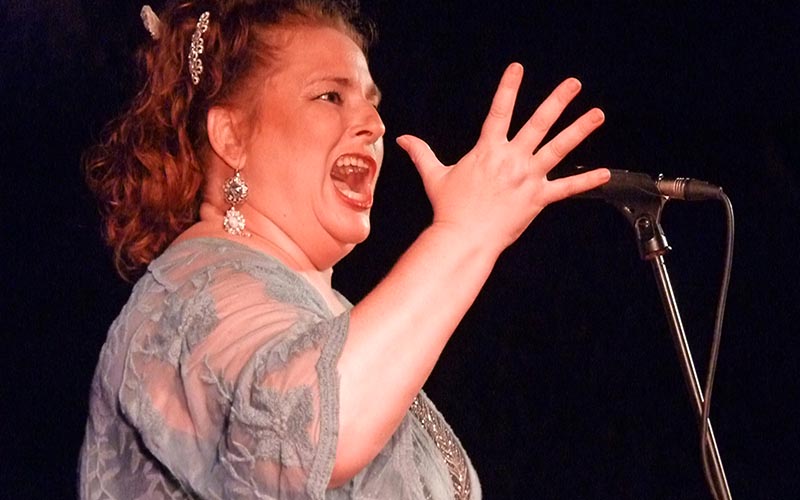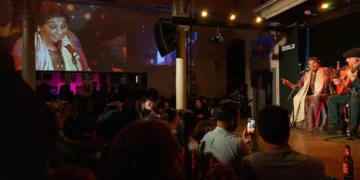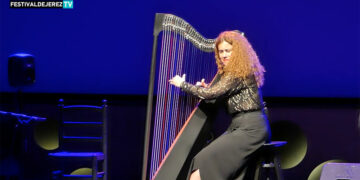Thursday, August 8th, 2019. 10:30pm. Museo de los Enganches de la Real Escuela de Arte Ecuestre, Jerez de la Frontera
An ambitious event aiming to open a new chapter and claim a piece of Jerez strangely empty until now. Ladies and gentlemen, welcome to the birth of the Bienal de Cante of Jerez de la Frontera.
Estela Zatania
Cante: Elu de Jerez, Dolores Agujetas, María Vargas. Solo guitar: Alba Espert. Harp: Ana Crisman. Guitar accompaniment: Domingo Rubichi. Rhythm: José Rubichi, Javier Peña
The father of the child is Mario González of the Guarida del Ángel, with the complicity of Lola Vallespí, both enthusiastic about the project, because things like this can only be taken on with the most sincere aspirations and dedication. A wide program of diverse parallel activities has included last Monday’s inaugural show “Casa de los Sordera”, to whom the entire festival is dedicated, and on Wednesday August 7th, on the twentieth anniversary of the passing of Jerez cult figure, Luis de la Pica, the flamenco singing contest cut the virtual ribbon for the first semifinal round.
On Thursday evening, there was an intense search for the “duende” with a program starring five women. Since I’m not one to sign up for bra-burning, let’s talk about artistry and competence without considering physical questions.
One guitarist, one harpist and three singers, all women, with enough collective power to stop a train, generously shared that power with us, holding nothing back. Each one in her own way.
For some time, Jerez guitarist Alba Espert has been making a place for herself in the world of flamenco that doesn’t easily accept a woman on guitar. The absurd rumors that women lack the strength, their hands are too small, it’s anti-aesthetic, etc., it all melts away with Alba’s talent and command. She’s not the first professional female flamenco guitarist, but there are so few, a new one on the scene raises eyebrows. She plays traditional flamenco without contemporary harmony, paying tribute to classic maestros such as Sabicas, even playing his mini composition he called Las Tres Hermanas…very surprising. She played soleá, taranta and siguiriya with cabal.
Eloísa Jiménez, la Elu, a much underestimated Jerez treasure. In the line of Paquera, but there’s more to it. Her singing is brave and authentic, and she has a certain presence of times past, in the positive sense. Martinete and debla, malagueña with Granada abandolao, siguiriyas, her strong point and classic bulerías, meaty and good with the San Miguel sound and rhythm galore.
Dolores Agujetas, the daughter of the father, with exaggerated gestures, okey, but it doesn’t matter, the cante comes out visceral, right to the limits with a hotline to our innards and sounding as if her life were in the balance with each note. She sang tientos tangos, soleá, fandangos, the family anthem which is siguiriyas and ended with bulerías.
More excitement in the second part. We were all skeptical when two stage-hands placed a harp on-stage. Some people are lactose intolerant, but my problem is the resulting indigestion that occurs in the presence of odd instruments in flamenco. The piano treads heavily, a flute seems overly sweet, etc…. But Ana Crismán, with long curly hair, looking like cherub with her customary instrument, serves flamenco effectively and intelligently. She played a beautiful soleá woven with threads of Morao and Parrilla, and rondeña with appropriate tuning. The musician also executed absolutely credible strumming and tremolos, pure magic. The “duendes” gathered round, they couldn’t even believe it. The war-cry of “¡viva Jerez!” triggered the appearance of rhythm back-up just as for any bulería fiesta finale in this part of the world.
To wrap things up in style, the legendary María Vargas of Sanlúcar who was warmly applauded when she appeared on stage. Beautiful in her maturity, wearing deliriously high stiletto heels. The real deal. Painful sweetness pours from her throat in romeras, and then, genuine and charismatic when she addresses the audience explaining problems with the amplification, charming and natural. It’s the first time she’s sung in Jerez in a long time, but she continues to have a faithful following. Her metallic voice hurts just right for siguiriyas, the “ay”s are chilling, cutting. She battles with each note, and with the spaces in between them.
And then:
“Do you want me to sing a fandanguito?”
A voice shouts out: “María, you’re the boss!”
Magnificent bulerías with classic verses to end, and all the while, guitarist Domingo Rubichi pulling Jerez out of thin air to provide just the right backup on a thoroughly well-rounded evening of flamenco in the charming patio of the Museum de los Enganches of the Real Escuela de Arte Ecuestre.



